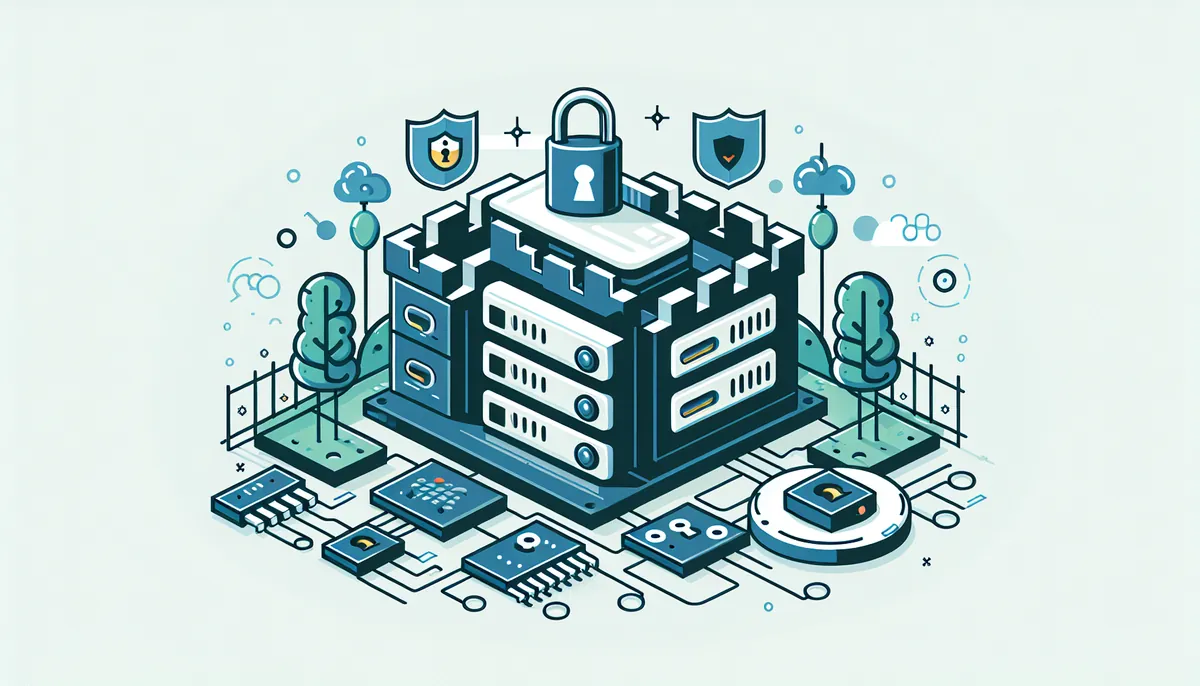Securing your Linux server is a crucial step that many system administrators overlook. In this comprehensive guide, we'll explore the essential steps to harden your Linux server's security and protect it from common threats.
Whether you're running a production server or a home lab setup, implementing proper security measures is non-negotiable in today's threat landscape. Let's dive into the most effective methods to secure your Linux system.
Understanding the Basics of Linux Security
Before implementing security measures, it's essential to understand the fundamental security concepts in Linux:
- User permissions and ownership
- File system security
- Network security
- Service management
- System monitoring
These elements form the foundation of a secure Linux system.
1. User Account Security
Proper user account management is your first line of defense:
- Disable root login via SSH
# Edit /etc/ssh/sshd_config
PermitRootLogin no
Code language: PHP (php)- Implement strong password policies:
# Install password quality checking library
sudo apt install libpam-pwquality
# Edit /etc/security/pwquality.conf
minlen = 12
minclass = 4
Code language: PHP (php)- Regularly audit user accounts:
# List all users with login privileges
awk -F: '($7 != "/sbin/nologin" && $7 != "/bin/false") { print $1 }' /etc/passwd
Code language: PHP (php)2. Network Security
Securing network access is crucial for protecting your server:
Configure UFW (Uncomplicated Firewall)
# Install UFW
sudo apt install ufw
# Allow SSH (before enabling)
sudo ufw allow ssh
# Enable firewall
sudo ufw enable
# Check status
sudo ufw status verbose
Code language: PHP (php)Secure SSH Configuration
Edit /etc/ssh/sshd_config with these secure settings:
Port 2222 # Change default port
Protocol 2
PermitRootLogin no
PasswordAuthentication no
X11Forwarding no
MaxAuthTries 3
Code language: PHP (php)3. System Updates and Package Management
Keeping your system updated is essential for security:
# Update package list and upgrade system
sudo apt update && sudo apt upgrade -y
# Enable automatic security updates
sudo apt install unattended-upgrades
sudo dpkg-reconfigure -plow unattended-upgrades
Code language: PHP (php)4. File System Security
Implement proper file system permissions and access controls:
# Find files with SUID bit set
sudo find / -type f -perm /4000 2>/dev/null
# Secure important files
sudo chmod 600 /etc/shadow
sudo chmod 644 /etc/passwd
Code language: PHP (php)5. Service Hardening
Minimize attack surface by managing services:
# List running services
systemctl list-units --type=service
# Disable unnecessary services
sudo systemctl disable [service_name]
sudo systemctl stop [service_name]
Code language: PHP (php)6. System Auditing
Implement logging and auditing:
# Install auditd
sudo apt install auditd
# Start the audit service
sudo systemctl enable auditd
sudo systemctl start auditd
# Basic audit rules
sudo auditctl -w /etc/passwd -p wa -k passwd_changes
sudo auditctl -w /etc/shadow -p wa -k shadow_changes
Code language: PHP (php)7. Implementing Fail2ban
Protect against brute force attacks:
# Install Fail2ban
sudo apt install fail2ban
# Create local config
sudo cp /etc/fail2ban/jail.conf /etc/fail2ban/jail.local
# Edit configuration
sudo nano /etc/fail2ban/jail.local
Code language: PHP (php)Basic fail2ban configuration:
[sshd]
enabled = true
port = ssh
filter = sshd
logpath = /var/log/auth.log
maxretry = 3
bantime = 3600
Code language: JavaScript (javascript)Best Practices and Additional Tips
- Regular Security Audits
- Run regular security scans
- Monitor system logs
- Keep documentation updated
- Backup Strategy
- Implement regular backups
- Test backup restoration
- Store backups securely off-site
- Monitor System Resources
- Use tools like
htop,iotop, andnetstat - Set up monitoring alerts
- Review logs regularly
Conclusion
Securing a Linux server is an ongoing process that requires regular attention and updates. By implementing these security measures, you'll significantly improve your server's security posture against common threats.
Remember to regularly review and update your security measures, stay informed about new security threats, and always follow the principle of least privilege.
Take action now to secure your Linux server – the longer you wait, the more vulnerable your system becomes. Start with implementing these basic security measures and gradually build up your security infrastructure.
Join the discussion below and share your experiences with Linux server security. What additional measures do you implement to keep your servers secure?


4 thoughts on “Securing Your Linux Server: Essential Security Hardening Guide”